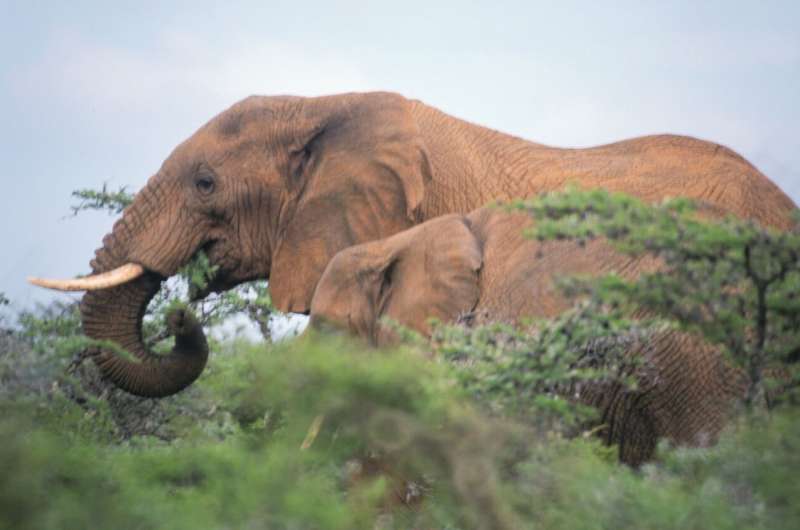
What number of dung beetles are there in East Africa? That query impressed a analysis venture greater than 20 years in the past when Frank Krell was a analysis entomologist with the Pure Historical past Museum London. All through a three-year-long venture alongside together with his spouse, ecologist Sylvia Krell-Westerwalbesloh, they appeared deep into the ecology of dung beetles in West and East African savannas.
Their newest analysis is now printed in The Science of Nature.
African grasslands are dung beetle heaven. If one, missing a restroom close by, opts to alleviate oneself behind the bushes, their waste can disappear inside a half hour due to the abundance of dung beetles. However for elephants, it can take a bit longer. This led them to an fascinating query: what number of beetles does elephant dung appeal to?
Once they visited the Laikipia area in central Kenya, they went to work to seek out out. Elephant dung is straightforward to seek out because it happens in massive heaps and sometimes on the highway. Upon finding the elephant waste, they collected two balls—also referred to as “boli”—and uncovered certainly one of them through the evening and one through the daytime on the naked soil to see what would occur.
-
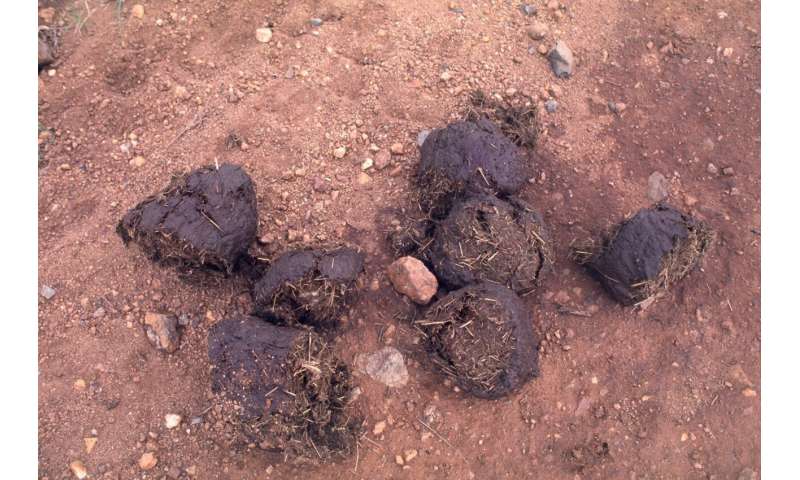
Typical elephant droppings discovered on the highway close to the Mpala Analysis Centre in Laikipia, Kenya in 2003. Credit score: Dr. Frank Krell/ Denver Museum of Nature & Science
-
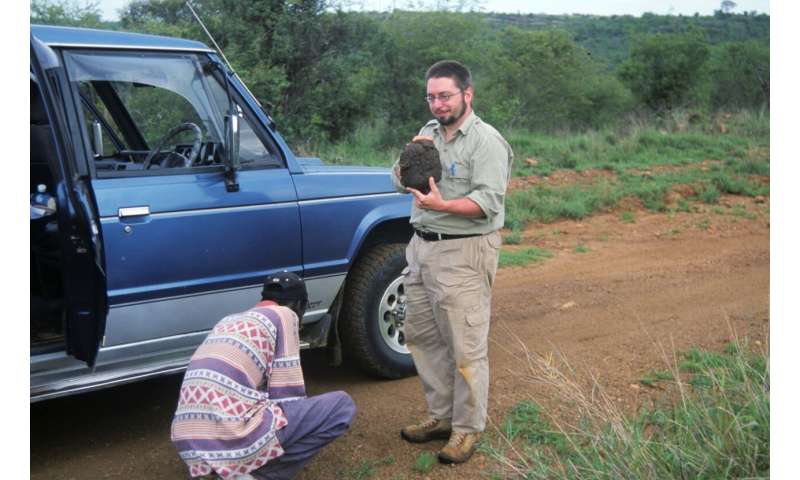
A youthful Dr. Frank Krell discovered a beautiful bolus of elephant dung close to the Mpala Analysis Centre in Laikipia, Kenya in 2003. Credit score: Sylvia Krell-Westerwalbesloh
After half a day every, they collected the rest of the dung and soil beneath and extracted all of the dung beetles utilizing the floating technique, which is mainly throwing the dung right into a bucket of water: dung sinks, beetles float.
Whereas the “day bolus” contained simply over 3,300 beetles, the one uncovered in a single day, now not recognizable as a bolus, harbored 13,399 dung-loving beetles. Sylvia counted all of them—ecologists want stamina. All that was left of the bolus was a skinny mat of dung residue.
It’s identified that two kilos of elephant dung serve about 13,400 beetles with meals and shelter. Elephants produce on common 320 kilos of dung per day. That signifies that one elephant can maintain greater than 2 million dung beetles on any given day.
The Laikipia-Samburu ecosystem, which hosts roughly 5,000 to 7,500 elephants, would then present for 14 billion dung beetles in an space of over 21,000 sq. miles—which is concerning the measurement of Maryland and New Jersey mixed.
-
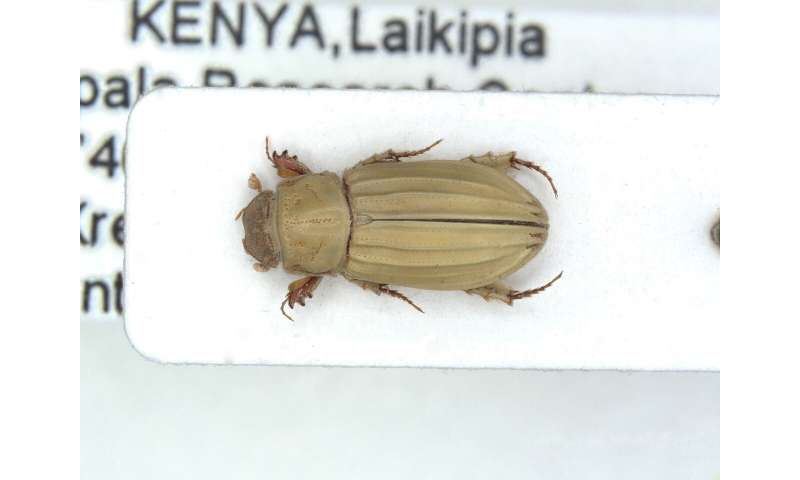
Dung beetle Sybax impressicollis, collected on March 8, 2003, from elephant dung in Laikipia, Kenya. {The catalogue} quantity is DMNS ZE.133395. It’s the first file of this species for Kenya. Credit score: Frank Krell
-
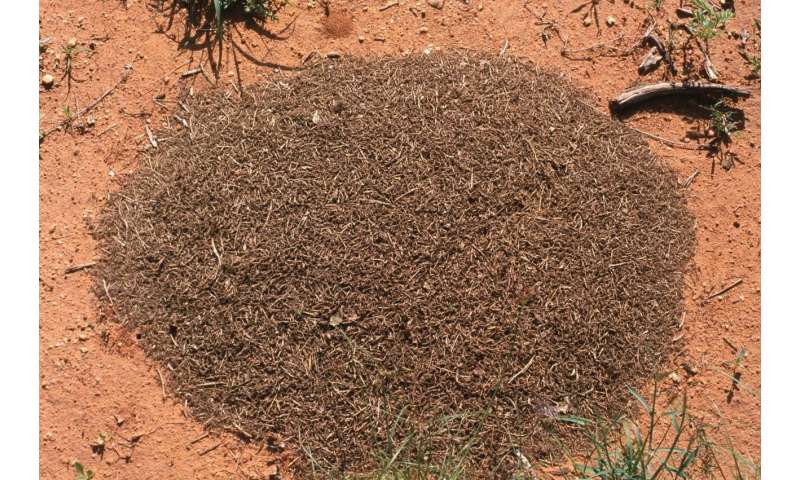
One elephant bolus after an evening’s work by dung beetles. Credit score: Frank Krell
Whereas the African savanna elephant shouldn’t be presently near extinction in East Africa, the species is classed as threatened by the Worldwide Union for Conservation of Nature and did vanish from different elements of continent.
So, what would occur if the elephants disappeared? Among the beetles would discover different meals, however the dung to assist 14 billion dung beetles would stop to exist. The extinction of the majestic largest land mammal on the planet would undoubtedly have devastating results on the billions and billions of smaller animals relying on them.
Extra data:
Frank-Thorsten Krell et al, One elephant might maintain 2 million dung beetles in East African savannas on any given day, The Science of Nature (2024). DOI: 10.1007/s00114-024-01894-9
Supplied by
Denver Museum of Nature & Science
Quotation:
One elephant can maintain greater than 2 million dung beetles in east African savannas, research finds (2024, July 23)
retrieved 24 July 2024
from https://phys.org/information/2024-07-elephant-sustain-million-dung-beetles.html
This doc is topic to copyright. Other than any honest dealing for the aim of personal research or analysis, no
half could also be reproduced with out the written permission. The content material is offered for data functions solely.
